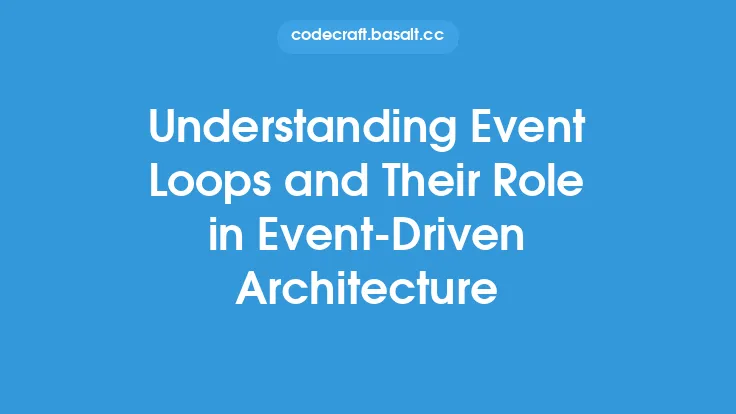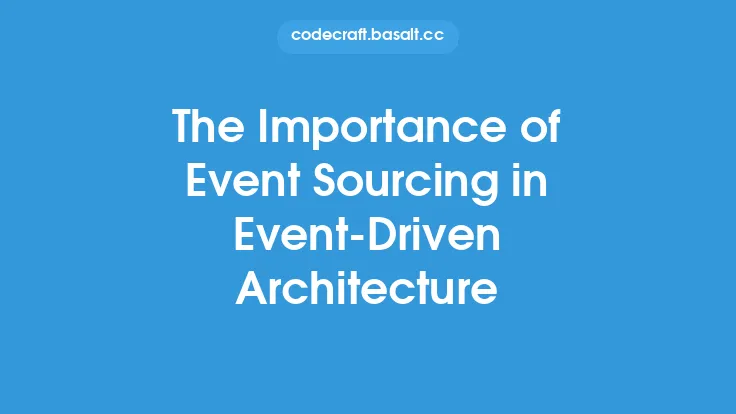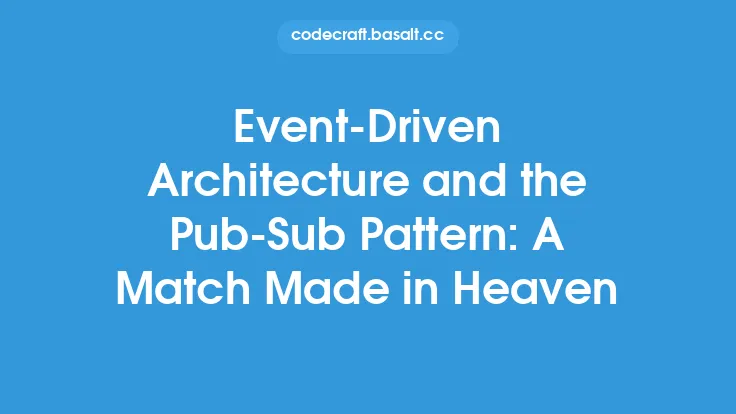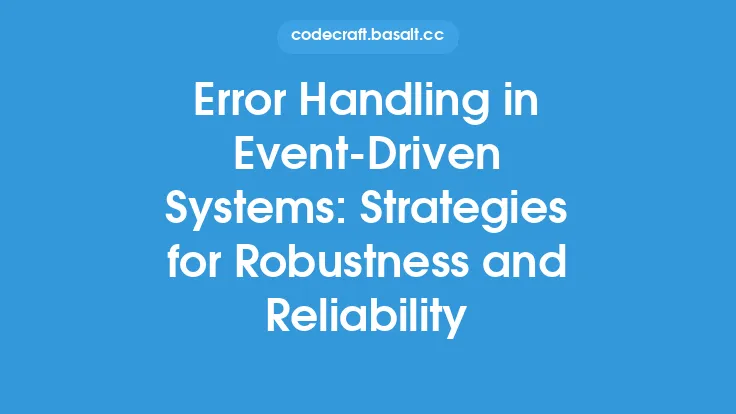Legacy systems are a common challenge faced by many organizations, as they often struggle to keep up with the demands of modern technology and business requirements. One approach to modernizing these systems is by adopting an event-driven architecture (EDA), which can help to increase scalability, flexibility, and maintainability. In this article, we will explore the role of event-driven architecture in legacy system modernization, and how it can be used to overcome the limitations of traditional monolithic systems.
Introduction to Event-Driven Architecture
Event-driven architecture is a design pattern that revolves around the production, detection, and consumption of events. An event is a significant change in state, such as a user placing an order or a payment being processed. In an EDA system, these events are used to trigger reactions and notifications, allowing different components to communicate with each other in a loosely coupled manner. This approach enables greater flexibility and scalability, as new components can be added or removed without affecting the entire system.
Challenges of Legacy Systems
Legacy systems often suffer from a number of challenges, including tight coupling, rigid architecture, and limited scalability. These systems are typically designed as monolithic applications, where all components are interconnected and interdependent. This makes it difficult to modify or extend the system, as changes to one component can have unintended consequences on other parts of the system. Additionally, legacy systems often rely on outdated technologies and infrastructure, which can make it difficult to integrate with modern systems and services.
Benefits of Event-Driven Architecture in Legacy System Modernization
The use of event-driven architecture in legacy system modernization offers a number of benefits, including:
- Loose Coupling: EDA enables loose coupling between components, allowing them to operate independently and reducing the risk of cascading failures.
- Scalability: EDA systems can be scaled more easily, as new components can be added or removed without affecting the entire system.
- Flexibility: EDA enables greater flexibility, as new events and reactions can be added without modifying the existing system.
- Maintainability: EDA systems are often easier to maintain, as each component can be updated or replaced without affecting other parts of the system.
Event-Driven Architecture Patterns
There are several event-driven architecture patterns that can be used in legacy system modernization, including:
- Event Sourcing: This pattern involves storing the history of an application's state as a sequence of events, allowing for greater flexibility and scalability.
- Command Query Responsibility Segregation (CQRS): This pattern involves separating the responsibilities of handling commands and queries, allowing for greater scalability and flexibility.
- Publish-Subscribe: This pattern involves allowing components to publish and subscribe to events, enabling loose coupling and greater flexibility.
Implementing Event-Driven Architecture in Legacy Systems
Implementing event-driven architecture in legacy systems requires a careful approach, as it involves introducing new technologies and design patterns into an existing system. The following steps can be taken to implement EDA in a legacy system:
- Identify Events: Identify the events that are relevant to the system, such as user interactions or changes in state.
- Design Event Handlers: Design event handlers that can react to these events, such as sending notifications or updating the system state.
- Introduce an Event Bus: Introduce an event bus that can handle the publication and subscription of events, enabling loose coupling between components.
- Refactor Components: Refactor existing components to operate in an event-driven manner, using the event bus to communicate with other components.
Case Study: Modernizing a Legacy E-commerce System
A company operating a legacy e-commerce system wanted to modernize their platform to improve scalability and flexibility. They adopted an event-driven architecture approach, introducing events such as "order placed" and "payment processed". They designed event handlers that could react to these events, such as sending notifications to customers or updating the system state. They also introduced an event bus that enabled loose coupling between components, allowing them to operate independently and reducing the risk of cascading failures. The result was a more scalable and flexible system that could handle increased traffic and provide a better user experience.
Best Practices for Event-Driven Architecture in Legacy System Modernization
The following best practices can be applied when using event-driven architecture in legacy system modernization:
- Start Small: Start with a small pilot project to test the waters and gain experience with event-driven architecture.
- Focus on Business Capabilities: Focus on the business capabilities that need to be modernized, rather than trying to modernize the entire system at once.
- Use Existing Infrastructure: Use existing infrastructure and technologies where possible, to reduce the risk of introducing new complexity.
- Monitor and Analyze: Monitor and analyze the system to identify areas for improvement and optimize the event-driven architecture.
Conclusion
Event-driven architecture offers a powerful approach to modernizing legacy systems, enabling greater scalability, flexibility, and maintainability. By introducing events and event handlers, and using an event bus to enable loose coupling between components, organizations can overcome the limitations of traditional monolithic systems and create a more modern and agile platform. By following best practices and taking a careful approach, organizations can successfully implement event-driven architecture in their legacy systems and achieve greater success in today's fast-paced digital landscape.





